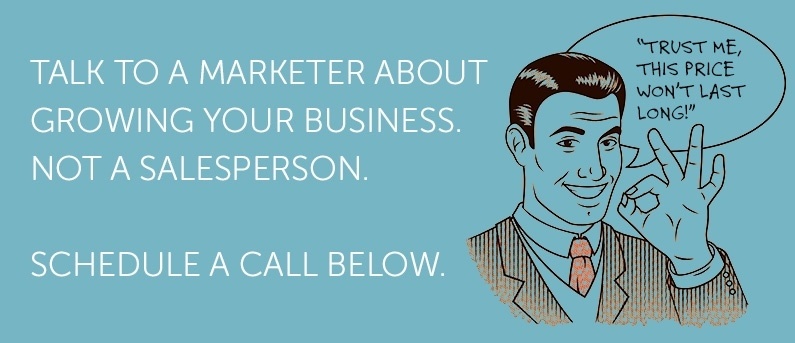 Inbound marketing has largely eclipsed most other forms of marketing, particularly those centered on “interruption” tactics like radio/TV, outdoor boards, cold calls and direct mail. For an IT company whose customer base includes small businesses and global firms, and who may deal with tech experts and novices alike, increasing conversions across a wide range of needs is challenging, but not impossible.
Inbound marketing has largely eclipsed most other forms of marketing, particularly those centered on “interruption” tactics like radio/TV, outdoor boards, cold calls and direct mail. For an IT company whose customer base includes small businesses and global firms, and who may deal with tech experts and novices alike, increasing conversions across a wide range of needs is challenging, but not impossible.
The key is to follow the steps of inbound marketing – from discovery to lead generation and, finally, to conversion – always with your focus on the customer.
Know Your Customer
You may know the names, addresses and even golf scores of your current customers, but what about those folks you haven’t done business with yet? How do you tailor inbound marketing to them?
Increasingly, wise companies are turning to customer personas to put a (virtual) face to the demographic. A persona is a fictional character – an archetype, basically – designed around the key characteristics of your desired customer. By doing customer and market research, you and your inbound marketing specialist should be able to determine things like the prospect’s average age, income and job title – as well as more specific information, such as what they want in an IT company, what technology issues keep them up at night, and even what social networks they frequent most.
You can name your personas, and even celebrate their birthdays, but don’t get so caught up in the personal that you forego the professional. Don’t worry about whether your persona is a “dog person” or a “cat person,” for instance. Those details don’t apply. As a writer for Content Marketing Institute notes, “what does apply are insights to the work life, objectives, orientation and obstacles your buyer faces that could be addressed by whatever you sell. I don’t care if he lives in a tent, a sprawling rambler in the suburbs, or a cramped apartment in the city. That’s not going to influence how he builds consensus with his team to buy cloud storage, beef up his network to enable mobility, or decide to virtualize his company’s call center.”
Publish (Great) Content and More (Great) Content
Inbound marketing, particularly the B2B variety, has its roots in credibility – which Forbes counts as vital to increasing conversion rates. When you consider that anyone can hang their “IT” shingle online and put out a pretty website that may not reflect their actual skills, you realize that you need to help web searchers identify your business as trustworthy and experienced.
And when it comes to credibility, content is your first choice. When a prospective customer has a particular need – say, building an e-commerce site – he may start with a Google search. Imagine the impact you could make if near the top of the results is an informative blog or video addressing that exact issue.
Great content talks directly to web visitors about topics they care about – and the content that resonates doesn’t come off as an ad about your company or a plea to "buy now!" That kind of pitch comes later in the inbound sales funnel, after you've established your credibility.
You can develop blogs, eBooks, whitepapers, videos, podcasts, interviews – whatever you determine works best for a specific customer segment – then promote that content via SEO-tied keywords, through your social networks. And consistency is the key: one lonely blog posting isn’t going to make as good an impression as would a weekly series covering developments in IT and other topics dear to the hearts of your audience.
Create Landing Pages That Work
Notice we didn’t say landing page. We’re thinking plural here, because just as you have more than one customer type, you should have more than one landing page. The hardest-working page on your website, the landing page is where visitors offer contact and other information in exchange for premium content or some other meaningful perk. You use that information to convert the visitors into qualified leads, and the information they supply helps you target your messages to them going forward.
What makes perfect landing pages? Well, “perfection” is a lofty goal and, frankly, every landing page is a constant work-in-progress as you test and measure the results, and then adjust the content accordingly. But you can count on three landing-page must-haves:
- A Message Targeted to the Customer Type - A novice to IT services will be scared by a landing page larded with techie lingo that only a seasoned developer understands. Likewise, if you’re playing to an experienced audience, let them know you are fluent in their language. In any case, make the landing page’s big headline some kind of benefit, whether that’s an exclusive report, a free consultation or a good deal on a systems upgrade.
- A Clean Look - Your landing page has one job to do – get the info that helps conversions, and then send people back on their way. So ditch the ads, auto-loading videos, funny graphics, “about us” bragging and anything else that doesn’t contribute the benefit to the visitor and the form they’re expected to complete.
- A Sensible Form Field - The lead-gen form for would-be customers can be a tricky proposition. Too few questions, and you won’t have enough detail to determine if the lead is qualified. Too many (or too-personal) questions, and the visitor will hastily “back button” his way out of that hassle. Test your forms on focus groups, and once they’re launched, pay attention to how many fields are completed and how much benefit they deliver to you.
Follow the Steps to Success
Conversion doesn’t happen overnight, but it can happen when you know your prospects, create content just for them, emphasize the benefits on your landing page, make it easy for them to stay engaged with you and perform meaningful follow-ups via targeted email, phone or other media.
Follow the practices of strategic inbound marketing, and you could raise your online profile and capture attention from new customers.


